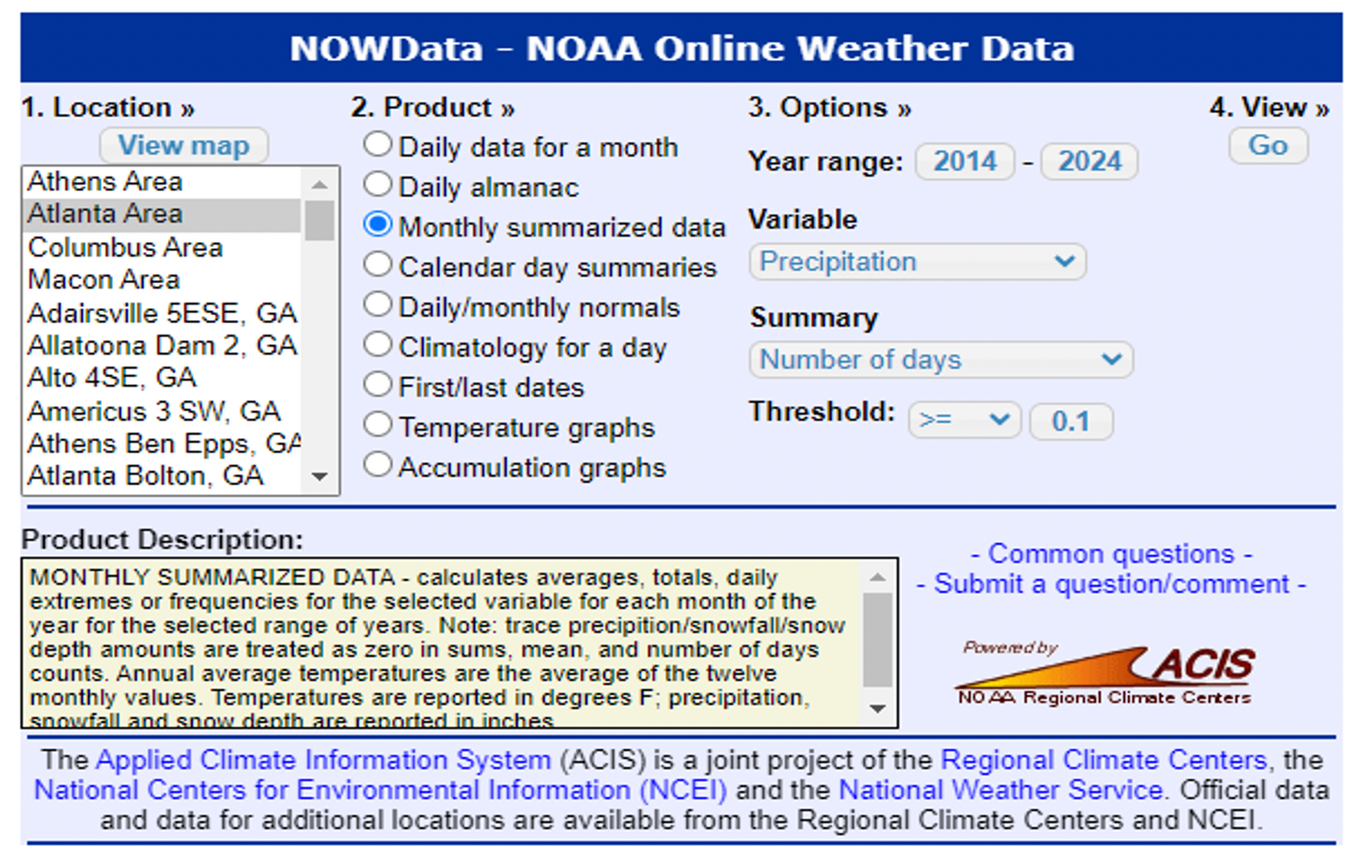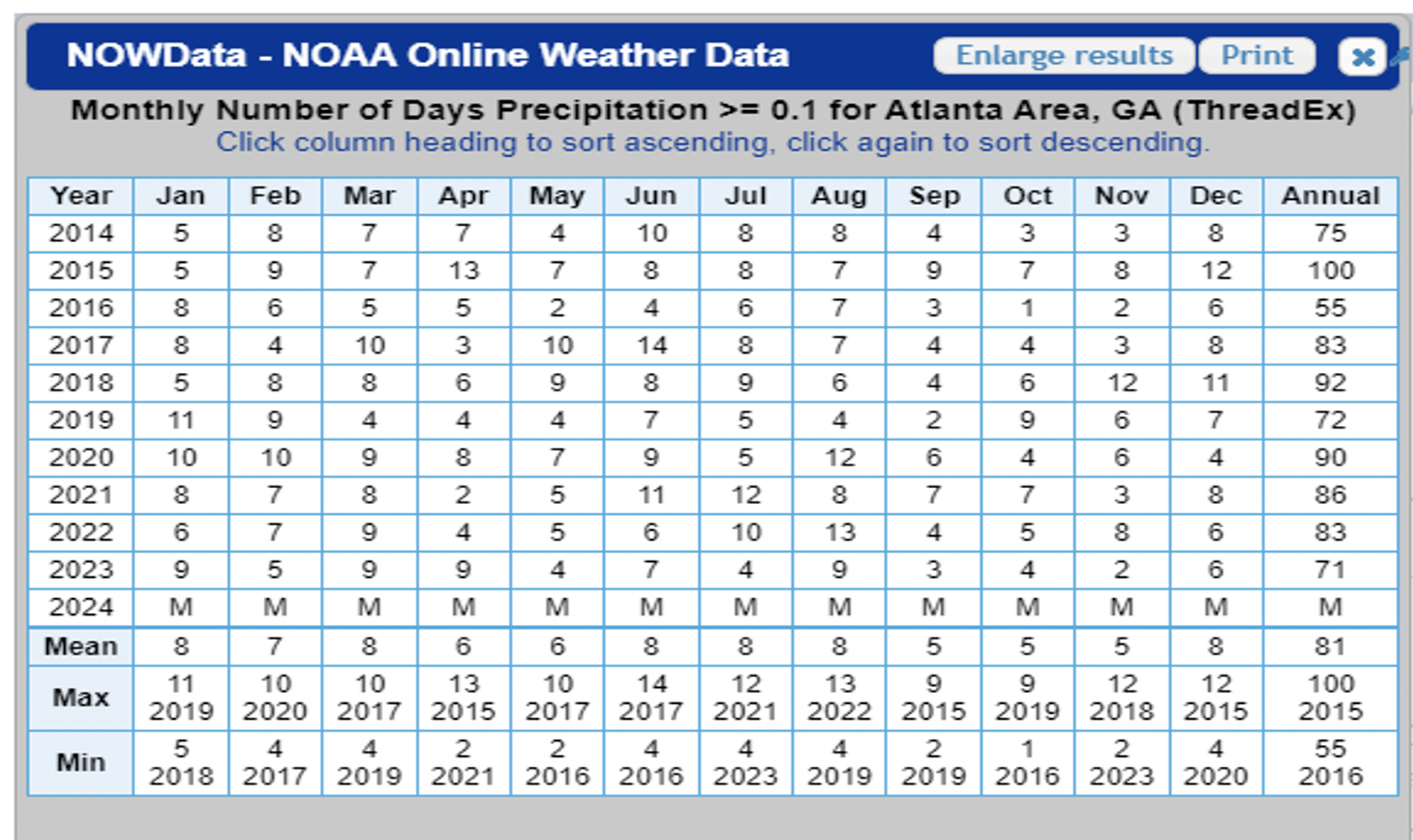Weather conditions, most commonly precipitation, play a pivotal role in construction projects, posing often unforeseen—if not unforeseeable—challenges which can significantly impact project timelines and budgets. In this alert, we will discuss the risks associated with weather days and best practices for mitigating those impacts.
So what are the risks that an Owner should be concerned about arising from unaccounted for weather days?
The primary concern is one of schedule. It is self-evident that work which cannot be completed on one day must be completed on another day. What is less apparent is who carries the contractual responsibility for a risk neither party can control. In most construction agreements—including the default language of the AIA forms—the Contractor will be entitled to a day-for-day extension of the project schedule for each unanticipated weather delay that impacts the Project’s critical path. While a single day over the course of a large project may not seem significant, these can quickly add up, adding weeks or even months to the project schedule.
Moreover, schedule extensions carry financial ramifications. These may include such impacts as additional carrying costs on the project’s loan, loss of revenue from a delayed opening of a project, and the inability to assess liquidated damages against the Contractor during the added delay period. Depending on how your agreement is drafted, it may also result in more direct costs including paying the Contractor its increased general conditions costs for each day of delay.
So, being unable to prevent weather days, what is the best way for an Owner to mitigate their impact?
The first step should always be to ensure that the Parties have accurately accounted for all reasonably anticipated historical weather conditions in preparing the initial project schedule, as the Contractor is only entitled to be compensated for weather days if the number of actual weather days encountered at the project site exceeds the number of historical weather days in a given month. Left to their own devices, Contractors may either overstate the proper number of weather days, or worse, exclude any and all weather days from their schedule.
However, the number of weather days included in the project schedule should be calculated based on the historical monthly data for the project site.
The National Oceanic and Atmospheric Administration (NOAA) provides free publicly available data regarding the ten- and twenty-year historical weather conditions in all fifty states. This data can be accessed and sorted here.
In calculating weather days, an Owner should take several criteria into account.
First, the Parties should establish quantifiable criteria as to what constitutes a weather day. With precipitation, for example, the most common metric is 0.1” per day.
Second, the data should be pulled from the NOAA station closest to the project site. It is not sufficient to merely rely on what had been previously agreed to on a recent project in the same state or region, as weather can vary significantly over even short distances.
Finally, the Parties should not rely on the data from merely the preceding year. To mitigate the chance of outliers and significant deviations, it is advisable to use no less than the average over the previous ten years.
Thus, using the link above, to discover the average number of days in which (a) at least 0.1” of precipitation occurs (b) on an Atlanta-based project (c) over the previous ten years, you would use the following inputs:

This would return the following results:

Based on this analysis, an Owner should anticipate roughly 81 days of rain per year.
While some may be concerned that including so many weather days will result in an unfavorable Substantial Completion date, it is important to recognize that the weather—and thus resulting delays—will occur whether or not it has been accounted for. Depending on the terms of the Owner/Contractor Agreement, any unaccounted-for weather days may entitle the Contractor, at a minimum, to a day-for-day extension of the schedule and relief from liquidated damages. All other things being equal, the project will be completed at the same time whether or not the weather was accounted for in the initial project schedule, so correctly accounting for historical norms gives all Parties a more realistic expectation of the actual date for Substantial Completion, and may save the Owner from paying out additional sums as well.
The impacts of weather can extend beyond mere schedule considerations, however. The wary Owner should also ensure that the Contractor has properly accounted for winterization costs, the provision of temporary heat, and properly timed temporary or permanent dry-in. These topics and more will be discussed in further client alerts. Stay tuned.
Morris, Manning & Martin’s Construction Law Practice Group is experienced in representing Owners and Developers of commercial properties. If you need any assistance in the process of drafting and negotiating Construction, Design, or Engineering Agreements, please contact Bruce Smith, chair of MMM’s Construction Law Practice Group, Colby Nelson, or JD Howard.




